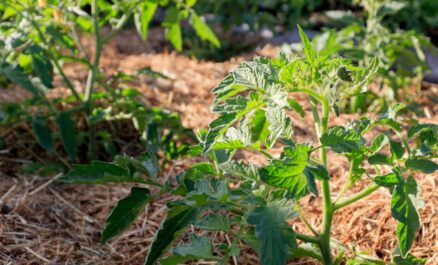Dangers of DIY Tree Removal

Did you know that tree felling ranks as one of the deadliest occupations in the world? While DIY tree removal may seem easy, successful tree removal is quite an involved process, requiring an in-depth understanding of tree physics, biology, advanced tree cutting techniques, and expertise in working with dangerous tools like chainsaws. Homeowners who attempt DIY tree removal risk property damage and personal injury from falling tree branches or the tree toppling over in the wrong direction.
This article explores the dangers of cutting down trees, what tree felling safety procedures in Australia involve, and why you might want to skip the DIY tree removal and get a professional arborist to perform a tree cutting risk assessment instead.
Dangers of Cutting Down Trees
What makes tree removal so dangerous? There are lots of risks involved in DIY tree removal:
Danger of DIY Tree Removal #1: Gravity
Once a tree starts to fall, you have no control over where it will drop. DIY tree removal always carries a risk that you may miscalculate where the branch or tree trunk will fall, even if you try to influence its direction with careful cutting techniques or ropes.
If your tree is located near your home or a powerline, you may want to think twice about DIY tree removal. If your tree falls on your home, your insurance may not cover the cost of the damage. If the tree hits a power line when it falls, you can trigger a blackout across your neighbourhood or even get electrocuted.
Danger of DIY Tree Removal #2: Falling Injury
Sustaining a fall injury is one of the greatest risks of tree removal work. When cutting down a hazardous tree, it’s often necessary to remove branches first. This means you will need to scale the tree and work from a height. Your risk of falling is increased if you extend from your centre of gravity or use heavy tools to complete the task, such as a chainsaw.
Danger of DIY Tree Removal #3: Dangerous Branches and Debris
Trees may have loose branches that will fall free as the tree comes down. If this danger is not carefully managed, these loose limbs and debris may hurt people on the ground, or even damage equipment and personal property. This is an especially significant risk if the tree you are cutting down is already dead or dying.
Danger of DIY Tree Removal #4: Decaying Wood
Internal decay can make a dead or dying tree unstable. If you think your tree is starting to decay, find a professional to remove it before it collapses without warning. Since removing a decayed tree requires an understanding of tree biology and physics, it’s strongly recommended that you enlist the help of a professional arborist.
Danger of DIY Tree Removal #5: Chainsaw Safety
Improperly using a chainsaw or not knowing how to properly use this machine can result in injury or even death. Chainsaws can suddenly and forcefully recoil when they hit a hard object such as a tree, causing it to kick back and harm the person using it.
Tree Felling Safety Procedures
Do You Need Council Approval?
Australia has rules and regulations regarding tree felling. Before cutting down or cutting back trees on your property, you may need to seek council approval. Always contact a professional arborist or your local council before you take action.
A professional arborist can provide advice on permits required from your council.
Do You Have The Right Tree Felling Equipment?
When removing a tree, arborists wear safety gear from head to toe, including a helmet, earmuffs, face screen, safety glasses and protective clothing. Tree removal professionals are also trained in using equipment such as chain saws, ropes, cranes, and wood chippers to safely fell and dispose of a tree. Without this equipment and expertise, DIY homeowners may expose themselves to unnecessary risk.
Do You Understand Tree Felling Safety Procedures?
Tree cutting safety requires professional training. Arbor Operations create a customised tree safety management plan for every tree removal job we perform. We understand how to plan the precise angle and position of the cut, factoring the tree’s height and weight distribution of the foliage into our calculations, to ensure the tree removal is performed as safely as possible.
Tree Cutting Risk Assessment
There are many reasons why cutting a tree down may be necessary. For example:
- A tree is causing a safety problem where your children play
- The tree roots are causing structural issues to buildings or blocking your drain pipes
- You’re renovating the area where the tree is located
- Your neighbour has complained about overhanging branches
- A tree is structurally unsound and hangs over your house
Our professional arborists will be able to provide a tree cutting risk assessment and a tree safety management plan. They can provide information on how long it will take and even offer options for recycling your tree into mulch.
Final Thoughts: Dangers of DIY Tree Removal
Thinking of DIY tree removal? We urge you to consider this decision carefully. Sustaining an injury or fatality from dangerous tree removal is just not worth the risk. To avoid damage, injury or fatalities, we recommend hiring a trained arborist. They will ensure your tree is removed using a complex risk assessment, including proper tree felling safety procedures, with insights into how to recycle your tree into wood chips to replenish your garden.
If you need professional help to remove your tree, the arborists at Arbor Operations will be happy to help. Contact the team at Arbor Operations today on 1800 652 862 to book a consultation or request a tree cutting risk assessment in Brisbane.






